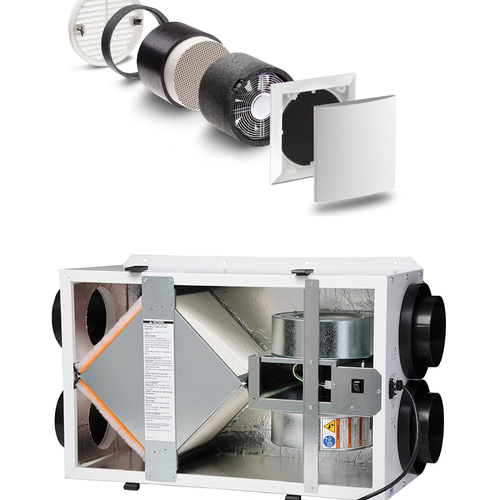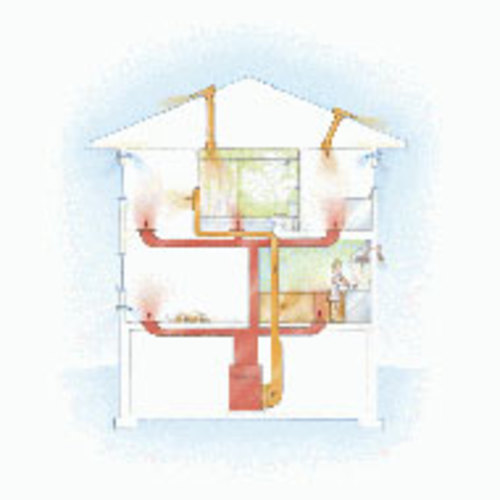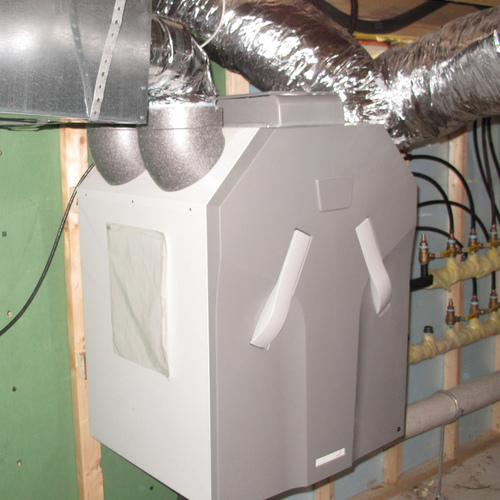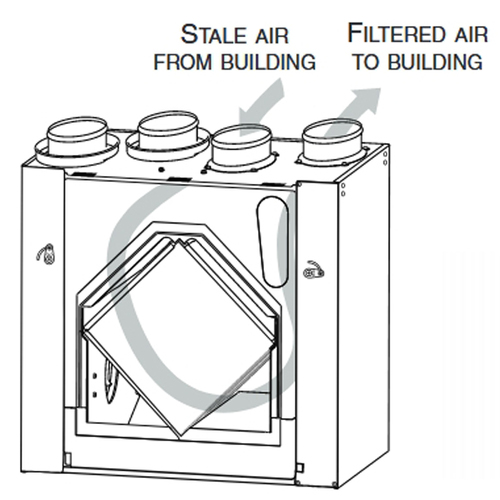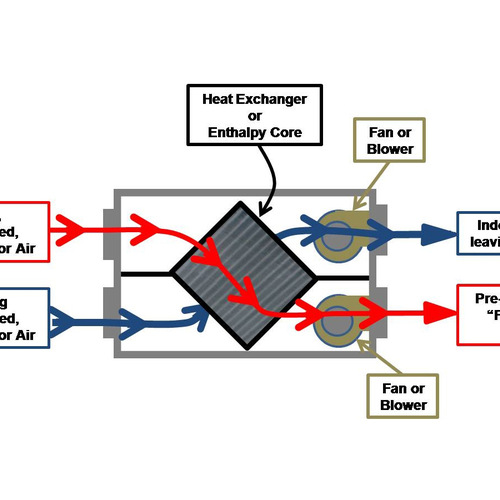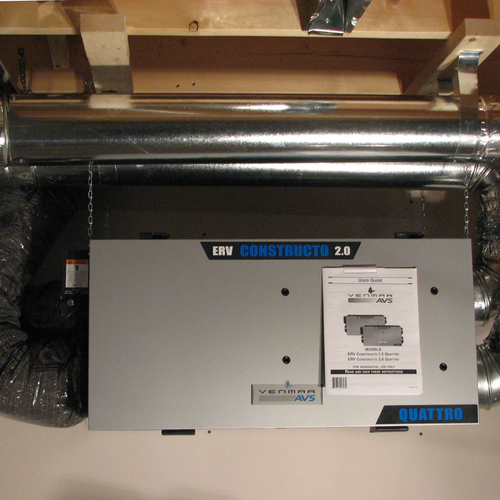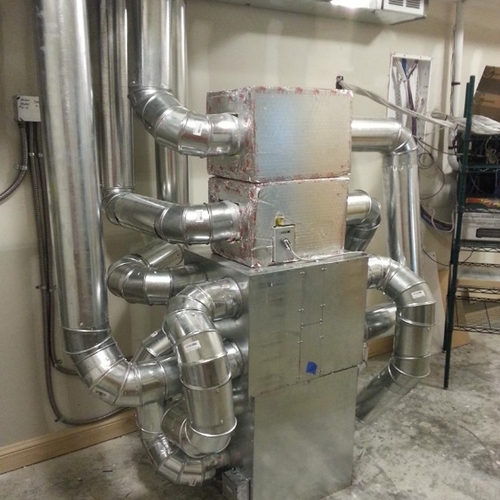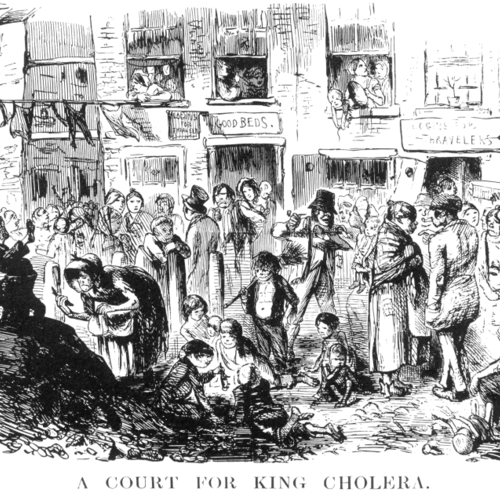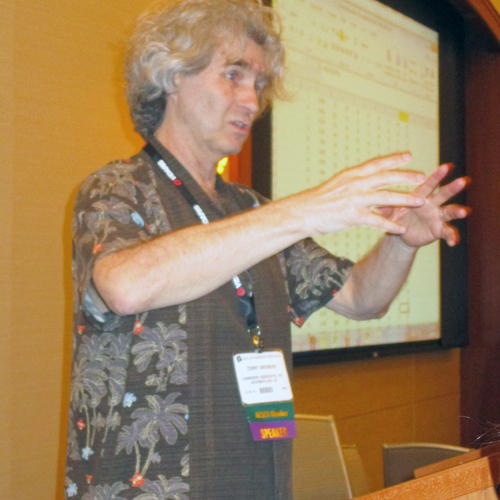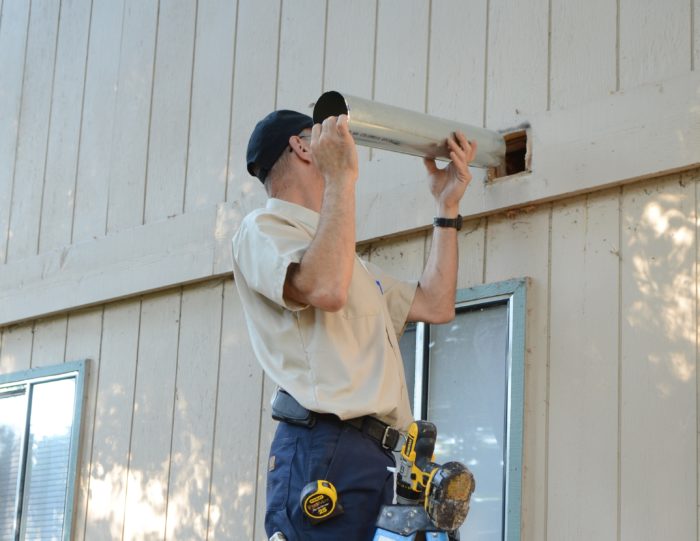
This is a collection of the most important GBA articles on mechanical ventilation systems — that is, systems that introduce fresh air to a home.
If you are looking for an index that spans all categories, with a special focus on “how to” articles, check out this resource page: “How to do Everything.”
-
Designing a Good Ventilation System
UPDATED on June 25, 2018 Most green builders include some type of mechanical ventilation system in every home they build. That’s good. Since green buildings usually have very low levels of air leakage, mechanical ventilation is usually essential. Unfortunately, several research studies have shown that a high number of mechanical ventilation systems are poorly designed or installed.
-
Revisiting Ventilation
My comprehensive article on residential ventilation systems, “Designing a Good Ventilation System,” was published back in 2009. A few things have changed in the last eight years, so it’s time to revisit the topic.
-
Ensuring Fresh Air in Bedrooms
Green builders try to make their homes as tight as possible. To ensure good indoor air quality, green building programs (and many residential building codes) require new homes to have a mechanical ventilation system.
-
Ventilation Choices: Three Ways to Keep Indoor Air Fresh
Every House Needs Fresh Air
-
HRV or ERV?
After investigating various ventilation options, many residential designers conclude that they want either a heat-recovery ventilator (HRV) or an energy-recovery ventilator (ERV). They often remain confused, however, about which of the two devices to choose. Every tight home needs a mechanical ventilation system.
-
Are HRVs Cost-Effective?
From 1977 (when the Saskatchewan Conservation house was built) until 2004 (when the first U.S. Passivhaus was built), North American builders completed hundreds of superinsulated homes. In those days, anyone interested in rating the performance of these homes was probably interested in just one metric: annual energy use.
-
Preventing Frost Buildup in HRVs and ERVs
Manufacturers of heat-recovery ventilators (HRVs) and energy-recovery ventilators (ERVs) know that HRV or ERV cores can get clogged with ice in cold temperatures. During the winter, this type of appliance brings cold outdoor air in close proximity to a stream of humid indoor air. If the outgoing air is humid enough, and the incoming air is cold enough, the moisture in the exhaust air stream can turn to ice.
-
Misconceptions About HRVs and ERVs
Since refrigerators have been around for almost a hundred years, most Americans know what a refrigerator is used for. But heat-recovery ventilators (HRVs) and energy-recovery ventilators (ERVs) have only been around for about 30 years, and many Americans still don’t know much about these appliances. GBA regularly receives questions that show that some homeowners are confused about the purpose of these appliances, so it’s worth examining and debunking common misconceptions about HRVs and ERVs.
-
Does a Home with an HRV Also Need Bath Fans?
UPDATED on June 29, 2017, with information on Aldes constant airflow regulators.
-
Using a Glycol Ground Loop to Condition Ventilation Air
Most energy-efficient homes include a mechanical ventilation system — often an HRV or ERV that brings in fresh outdoor air while simultaneously exhausting an equal volume of stale indoor air. The main problem with introducing outdoor air into a house is that the air is at the wrong temperature — too cold during the winter and too hot (and often too humid) during the summer.
-
Passive Air Inlets Usually Don’t Work
If your house has an exhaust-only ventilation system, does it need passive air inlets — that is, holes in the wall to let in outdoor air? In most cases, the answer is no. Unless your house is very, very tight — close to the Passivhaus standard of 0.6 ach50 — your building’s envelope is almost certainly leaky enough to allow for the smooth operation of a bathroom exhaust fan rated at 50 cfm or 100 cfm.
-
A Balanced Ventilation System With a Built-In Heat Pump
A small manufacturing company in Illinois called Build Equinox has developed a new ventilation appliance called the Conditioning Energy Recovery Ventilator, or CERV. Build Equinox was founded by an engineer, Ty Newell, and his son Ben Newell. (Ty Newell designed and built the Equinox House, which was described in a GBA article published in 2011.)
-
Ventilation Rates and Human Health
Stuffy homes are unhealthy homes, while homes with plenty of fresh air are healthy. That’s been a commonly held belief for at least 200 years. In the mid-19th century, the connection between ventilation and human health was championed by sanitarians, a group of health experts who blamed the spread of bubonic plague and cholera on “miasma.”
-
How Much Fresh Air Does Your Home Need?
The American Society of Heating, Refrigerating, and Air-Conditioning Engineers (ASHRAE) has had a residential ventilation standard since 2003, when ASHRAE 62.2 (“Ventilation and Acceptable Indoor Air Quality in Low-Rise Residential Buildings”) was first approved for publication. (For more information on providing fresh air for homes, see Designing a Good Ventilation System.)
-
Exhaust-Only Ventilation Systems and Radon
Articles on mechanical ventilation commonly warn builders that exhaust-only ventilation systems can pull radon into a house through foundation cracks. The warning makes intuitive sense: after all, an exhaust-only ventilation system works by depressurizing a house with respect to the outdoors, and it seems obvious that depressurization could pull soil gases into a basement. One thing I’ve learned over the years, however, is that just because an idea is intuitively obvious, doesn’t mean it’s true. Throughout history, many observers have speculated; far fewer have actually made measurements.
-
Simple Methods for Measuring Air Flow
UPDATED on April 15, 2016.
-
Is Your Ventilation System Working?
What’s a “faith-based ventilation system”? It’s a ventilation system installed by a contractor who never verifies the air flow rates after the equipment is installed. So, will this type of ventilation system work? It’s hard to say — because no one measured anything.

